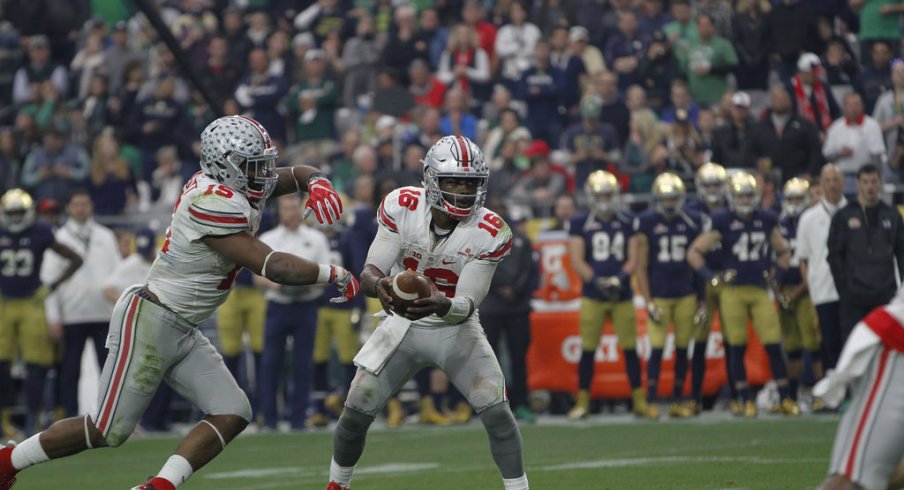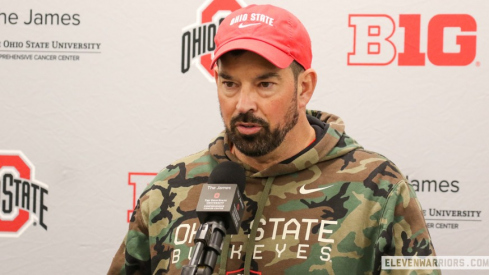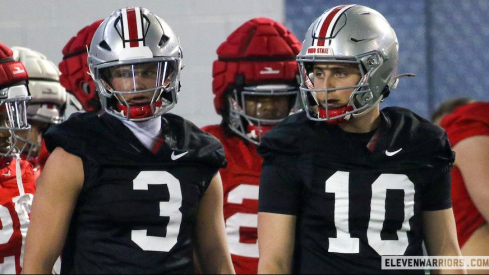In case you hadn't heard, option football is back in style.
Unlike the traditional wishbone, veer, or Power-I teams of the 1970s and 80s though, teams today have begun combining multiple spread offense concepts into one play, calling them 'packaged plays' or 'RPOs' (Run/Pass Options). Regardless of the nomenclature though, the philosophy is growing more and more popular every day.
No longer limited to niche corners of the football web, RPOs are now being examined on the national stage by established and respected writers like Bruce Feldman. In addition, teams are able to find countless new ways to package concepts together in this information age, making reports like the one recently published by X and O labs required reading for coaches at every level.
According to an interview with CBS two years ago, Ohio State head coach Urban Meyer was heavily interested in studying the concept, as he expected the number of teams that include them at the college level to double over the next two seasons. As many Film Study readers are aware, that prediction has more than come true, with the Buckeyes being among the earliest to incorporate them into their own uptempo offensive system.
However, the run/pass combinations to which Buckeye fans have been exposed are not necessarily at the forefront of innovation in the space. As is often the case with new trends in the game, coaches at lower levels are the ones truly pushing the boundaries of which concepts are being married to one another.
The Buckeyes most often like to pair their inside run game (often the ‘tight zone’ and ‘Power’ concepts) with a single pass route to the outside when packaging plays. These pass routes have often been quick, three-step passes in the form of hitches, slants, and wide receiver screens, getting the ball out of the quarterback’s hand quickly.
These packages benefit the Buckeyes, not because they value a 4-yard pass, but because they keep additional defenders away from the line of scrimmage which opens up that base run game. As Meyer and offensive coordinator Ed Warinner look for more ways to incorporate RPOs into their existing playbook, there are a number of innovations coming to light that would allow the Buckeyes to continue this philosophy of opening up the run game by threatening with the pass.
The first such concept we might see would be the combination of the Quarterback-Counter, a favorite of Meyer’s with both Braxton Miller and J.T. Barrett at the helm, with a backside post route from a single receiver in a 3x1 formation.
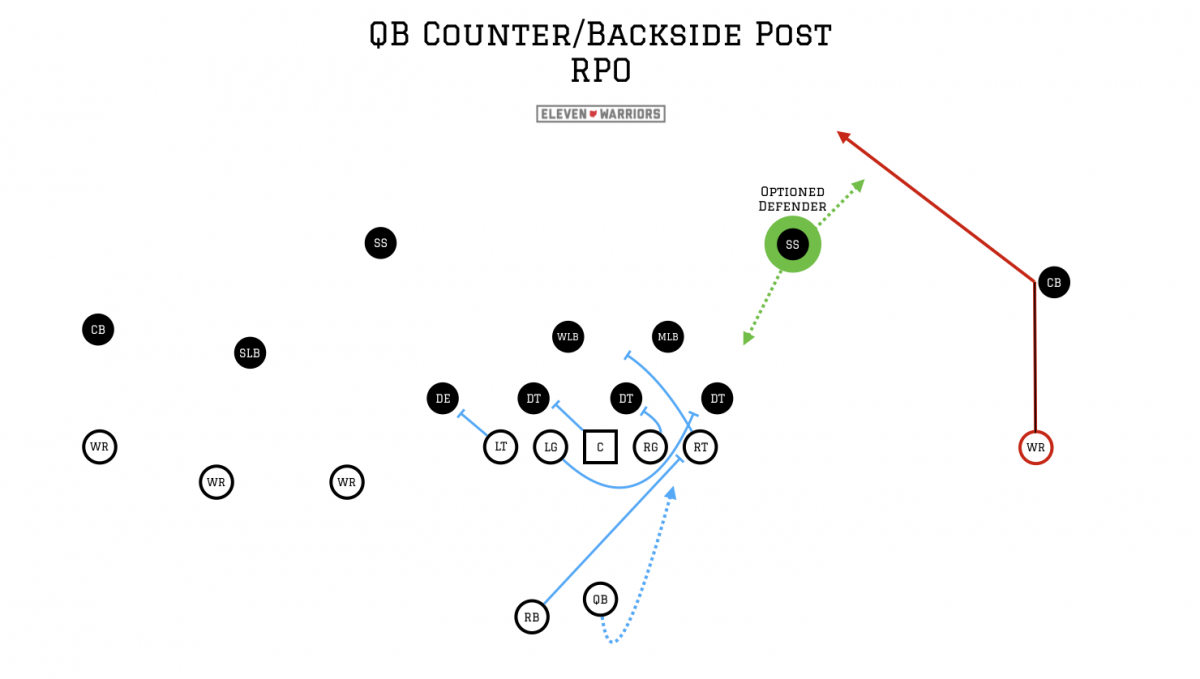
Against the Cover 4/Quarters defenses that have become increasingly popular throughout the nation, the Buckeyes are able to stress the backside safety when in this formation, as he must help in run support as the extra defender. By pulling the backside guard and using the running back as the lead blocker for a quarterback run, the offense is clearly signaling that the run is coming. Should the safety stay deep and not play this run, the offense would have six blockers to take on six defenders, leaving no one to tackle the quarterback.
However, should the safety come downhill on this run action, he’s left the cornerback to his side on an island with the lone wide receiver. All the receiver need do is get an inside position on that corner and the quarterback is able to make a simple throw downfield, leading the receiver to a wide-open patch of grass.

As we see in the example above, the quarterback takes the snap and immediately looks for the backside safety (#7), while his teammates find their blocks. As the safety crashes downhill, nearly to the line of scrimmage, the QB finds his receiver after an easy toss for a big gain.
Given how often the Buckeyes have to face Quarters concepts within their own conference, and the trouble they’ve had at times with such looks, there’s reason to believe Meyer’s staff will look for any possible weakness in which to exploit them. One such example came against Michigan State last fall, and will likely show up in the playbook of every Spartan opponent this autumn.
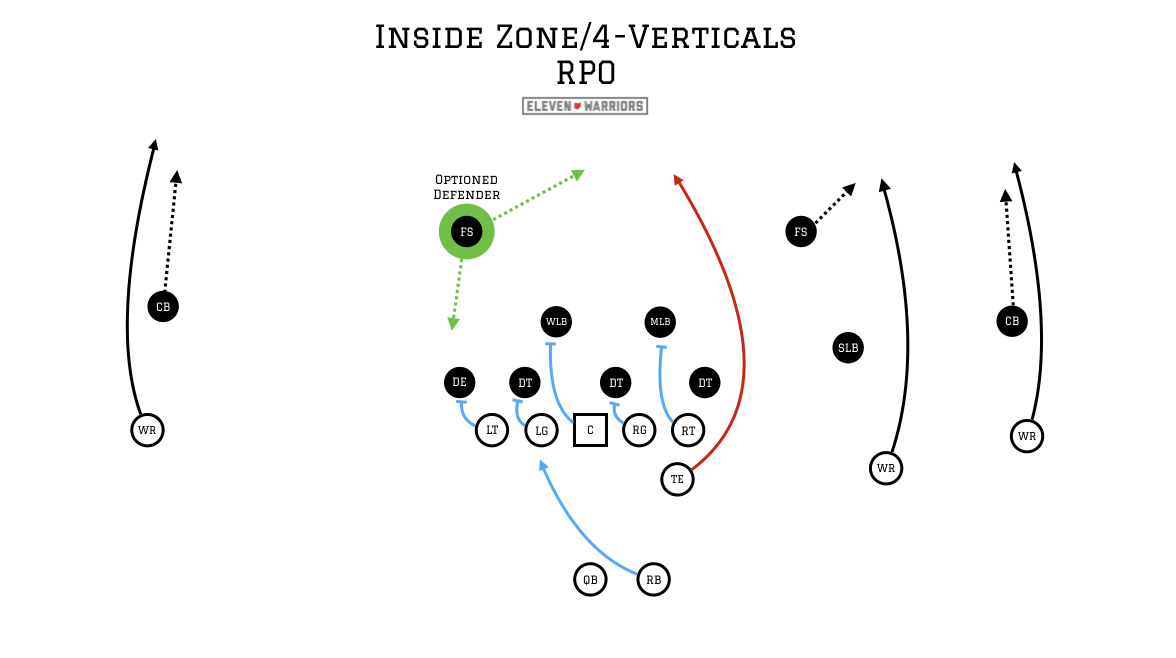
Though the tight end is in the backfield, he still forces to the defense to cover three receivers to one side, forcing the strong-side linebacker to step out in coverage and be replaced in run support by that backside safety once again. Instead of just sending one receiver downfield this time, the offense looks to stretch the entire defense with the ‘4 verticals’ concept found in virtually every team’s playbook.
The offense know the corners will run with both outside receivers, and the strong-side safety will take on the #2 receiver to his side once the receiver goes deep. In theory, the backside safety should cover the tight end in this instance, giving the defense four deep zone defenders (hence the name, Cover 4).
But with the safety looking to once again be the extra man in run support, his zone is left completely uncovered after he sprints up at the first sign of run.

Beyond attacking further and further downfield, RPOs have begun to build in multiple options for the quarterback, sometimes as many as three or four. By adding in this extra variable, the possible combinations are of course raised exponentially, with only the confines of a coach’s imagination limiting what they might draw on a whiteboard.
But given the Buckeyes’ philosophy of using these packages to enhance the productivity of their core playbook, those limits become smaller. As we saw from the final two games of the 2015 campaign though, those core philosophies could include some new additions given the personnel turnover in 2016.
One such wrinkle might be the increased use of two-back shotgun formations, something the Oklahoma Sooners called for quite frequently in their run to the College Football Playoff last year. The Sooners like to package an inside run with a ‘fly’ motion screen pass, in which the second back motions outside before the snap.
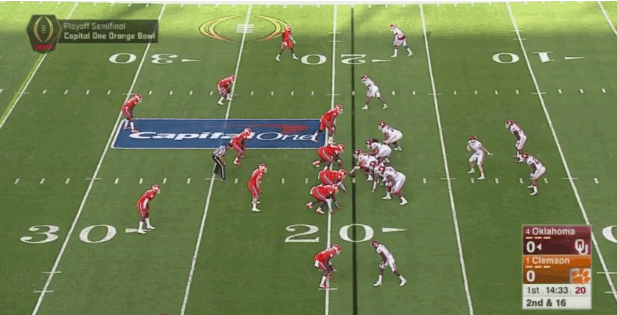
The concept is simple enough, as the QB simply reads the linebacker to see if he’ll follow the motion or play the run, guaranteeing the offense a numerical advantage in one of the two concepts. But as defenses begin to spot combinations like these more frequently, the chance of finding their own counter-punch is only a matter of time.
Some high school and small college teams that rely heavily on these concepts have already begun preparing though, and the Buckeyes should take note. One increasingly popular method is to add a third option in the form of a slant pattern.
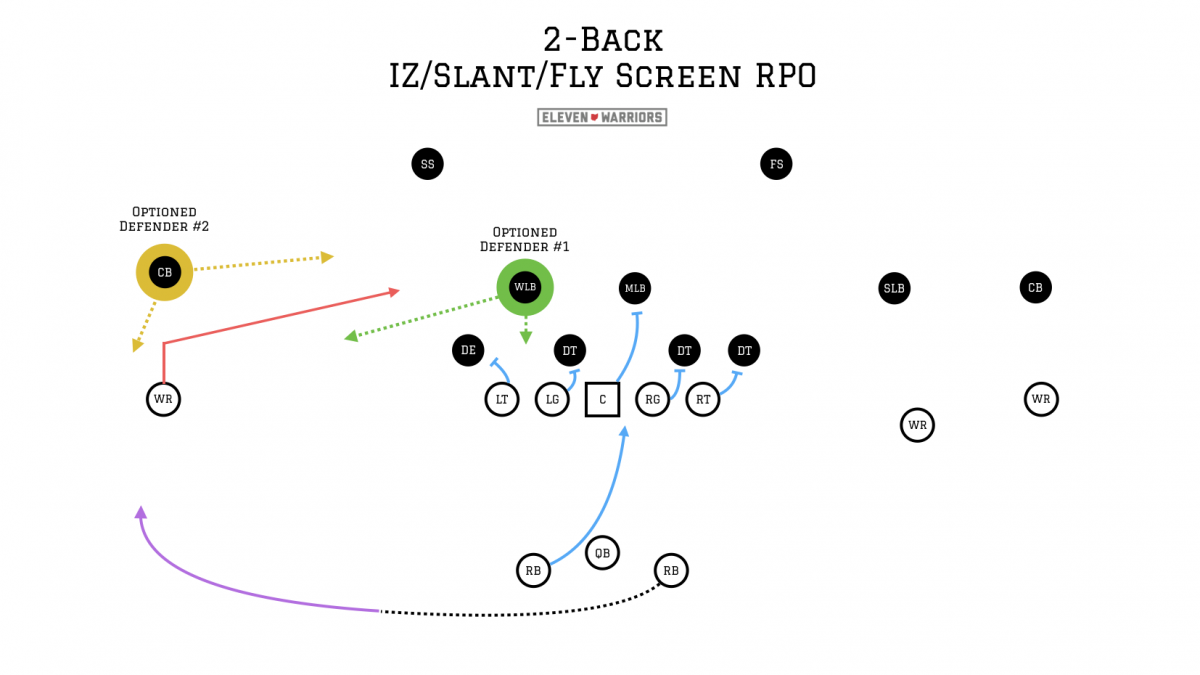
Unlike the example from the Sooners above, the backfield motion goes to the single receiver side, attacking five defenders instead of six. Once again, the quarterback reads the movement of the outside linebacker to see if he plays the handoff or follows the motion. If he follows the motion, the quarterback simply hands off on the inside run which should be well-blocked.
If the linebacker chases the back though, the QB then looks to the cornerback to the same side, looking to see if he also plays the motion or follows the split receiver. If the corner plays the screen or the receiver gains inside position on the corner, then the QB throws the slant. If the corner covers the slant properly, then the QB throws the screen, as the back should be in the open field all alone with a scrambling linebacker, a battle that should favor the offense every time.
Many of you are probably wondering how the defense could manipulate their coverage to ensure both the slant and the screen, which is exactly what the offense wants. These RPOs may seem exciting on paper, but for teams like Ohio State, they serve as a means to an end.
Meyer has not only said, but has shown, time and again that he wants to run the football inside on any and every opponent he faces. Those same opponents know that though, so incorporating the use of packaged plays serves as a method to keep them honest and unable to cheat extra defenders into the box, the way Virginia Tech and Michigan State did in three of the four defeats that have come during the coach’s tenure in Columbus.
So while we might all want the OSU coaches to push the boundaries of play-calling creativity, it’s important to remember why they’re doing it. It certainly isn’t just to be cute.
